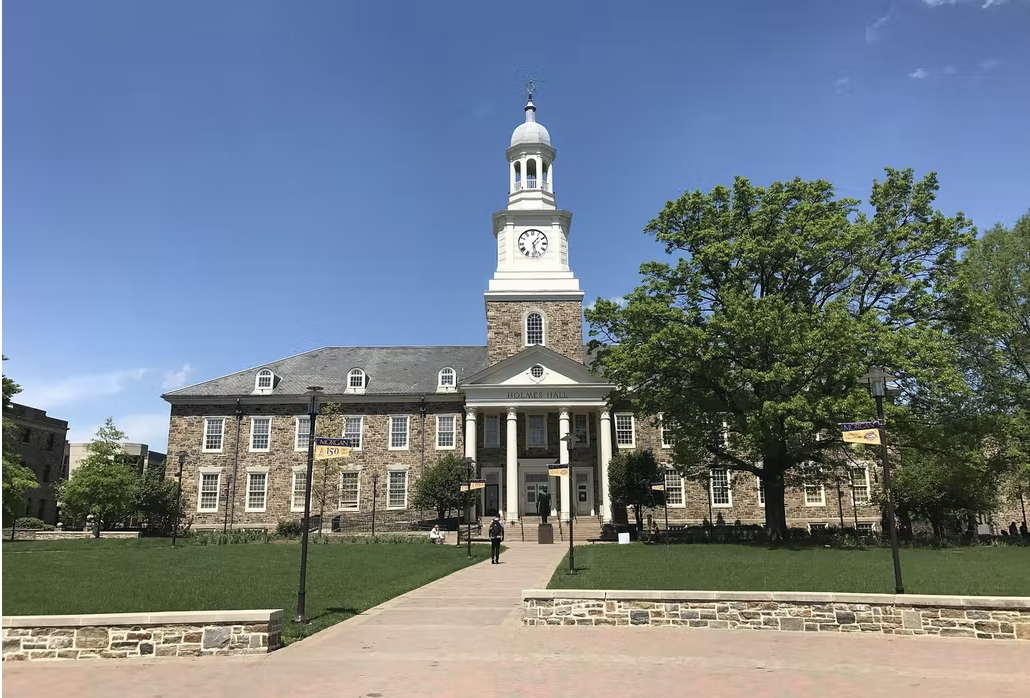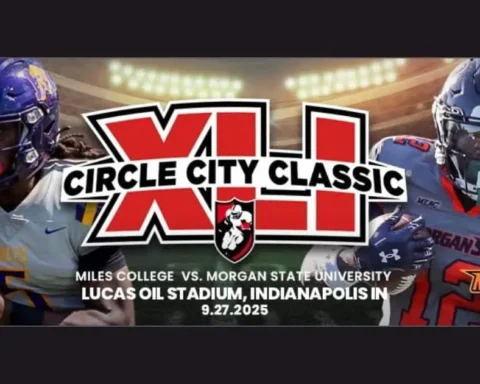Courtesy of Morgan State University
I’m sitting in the back of a classroom at Morgan State University in east Baltimore, Maryland. While the room has only about 15 people present, it’s loud.
“Are you kidding me? There’s no way that’s ethical!” cries one student near the front.
“Who cares? I don’t think that that is newsworthy at all,” responds another.
The professor simply chuckles and proceeds to lay out other possible scenarios, prodding students along in a conversation about journalistic ethics in today’s world.
Between my BYU classmate who is keeping me from completely falling asleep (thanks, redeye flight) and the banter in the classroom, I am amazed at the setup. The students and professor are so keenly in tune with one another. There is an underlying love and respect for the opinions, goals and interests of everyone.
This environment feels different than the common college experience of hundreds of students packed into a lecture hall in a class where barely the TAs, let alone professors, know your name.
But it wasn’t just the number of students that brought about this sort of tight-knit relationship. It also has a lot to do with Morgan State’s core values and mission and the history of America’s Historically Black Colleges and Universities, or HBCUs.
Painted on numerous walls in the signature blue and orange, dotted across campus on flags and pennants in the same color, are Morgan State University’s values: excellence, integrity, respect, diversity, innovation and leadership. I’d like to focus on excellence, innovation, and leadership and how these values were prevalent even in the short time I spent at Morgan State.
To set the stage, I’d like to use the university’s exact definitions of these values:
“Excellence. Excellence in teaching, research, scholarship, creative endeavors, student services and in all aspects of the university’s operations is continuously pursued at Morgan to ensure institutional effectiveness and efficiency.”
“Innovation. Morgan encourages and supports its faculty, staff and students in all forms of scholarship including the discovery and application of knowledge in teaching and learning and in developing innovative products and processes.”
“Diversity. A broad diversity of people and ideas are welcomed and supported at Morgan as essential to quality education in a global interdependent society. Students will have reasonable and affordable access to a comprehensive range of high quality educational programs and services.”
One of the most prominent examples of excellence brings me back to the classroom I found myself in at the beginning of my trip. Many college and university classroom experiences are often void of personal connection between student and professor. And that’s not to blame anyone, that’s generally just the nature of mass classrooms or required subjects. We’ve all had our share of 200+ student classrooms where we’re all sort of slogging through a general course so we can get to what we really want to study.
Yes, university classrooms can be isolating and lonely. Professors might not know your name, even if they really want to. They often have several classes to worry about as well as their own research, families and lives to maintain. And as students, our calendars are usually overflowing with a mishmash of deadlines, work shifts, social events and the occasional nap trying to pass as sleep. With all of this in mind, the opportunity and capacity to connect with students or professors often takes a backseat.
But this did not seem to happen in the classroom I visited. The comfortable discussion and banter, the apparent respect between students and staff, and the overarching focus on an involved, engaged learning experience was educational excellence. Perhaps it was the students, perhaps it was the professor, perhaps it was the day. I’d like to think though, that it was actually a combination of the overall feeling of Morgan, as well as a genuine dedication, conscious or not, to the pursuit of excellence in both staff and student.
Morgan State University was one of America’s early Historically Black Colleges and Universities. The university was built out of a desire and need for a place where Black Americans could receive their education, when no other such institution was found in the state of Maryland.
In an interview with Professor ER Shipp, a Morgan State professor who teaches journalism, the university was founded as a Methodist ministry school. The institution was named Biblical Centenary School and, as said by Professor Shipp, “was going to be a seminary to teach Black boys to be ministers and therefore to help control the Black population … educate and control.”
But as time went on, power and money changed hands. Eventually, in 1939, the call for an institute of higher education for Blacks was heeded, at least partially. Morgan State did not become Morgan State University until 1974, although it had been accredited as a college back in 1925. Prior to this, there was no state university where Blacks in Maryland could receive their higher education.
Morgan State was born out of a desire to meet the needs of Black citizens in Maryland. Innovation created the solution to the desire for the higher education that was generally exclusive and selective of white people only. Innovation was what created Morgan State and innovation is what keeps it as influential as it is now.
Diversity is a value that many institutions deem as one of their most important focal points. And as social movements fighting for the equality of various minority groups continue to increase, so does the cry for institutions big and small to diversify.
“Morgan’s mission, like those of most HBCU’s, is to try to reach the broadest number of people who would otherwise be left out,” Shipp said.
And Morgan seems to be doing that in no small way. As found on their website, the institution boasts over 140 academic programs ranging from “the baccalaureate to the doctorate.” The university is also known as Maryland’s preeminent public urban research university.
But aside from these accomplishments, Morgan State also focuses on what one might consider a more “traditional” or “typical” definition of diversity.
“I think that the added thing that comes with being part of an HBCU is diversity in a broader sense that we bring it and we seek it and we try to understand it,” said Jacqueline Jones, dean of the Morgan State School of Global Journalism and Communication.
“I think that because we live that kind of dual life in this country that we can understand and are maybe in some ways better able to explain what’s going on from somebody else’s perspective, because we’ve always had to explain ourselves to other people,” she said.
Jones also highlighted the importance of having diversity in academic work, including a variety in the ages, races, sexual orientations and experience levels of journalistic sources.
“When you’re really young, you’re always told ‘give both sides of the story.’ Well, sometimes there’s multiple sides,” Jones said.
Excellence, innovation and leadership seem to guide the story of Morgan State University, from its beginnings in the mid 1800s, to my recent visit in 2022. There is no doubt that these values will continually serve as a guiding light as the university expands and “seeks to ensure that the doors of higher education are opened as wide as possible to as many as possible.”







